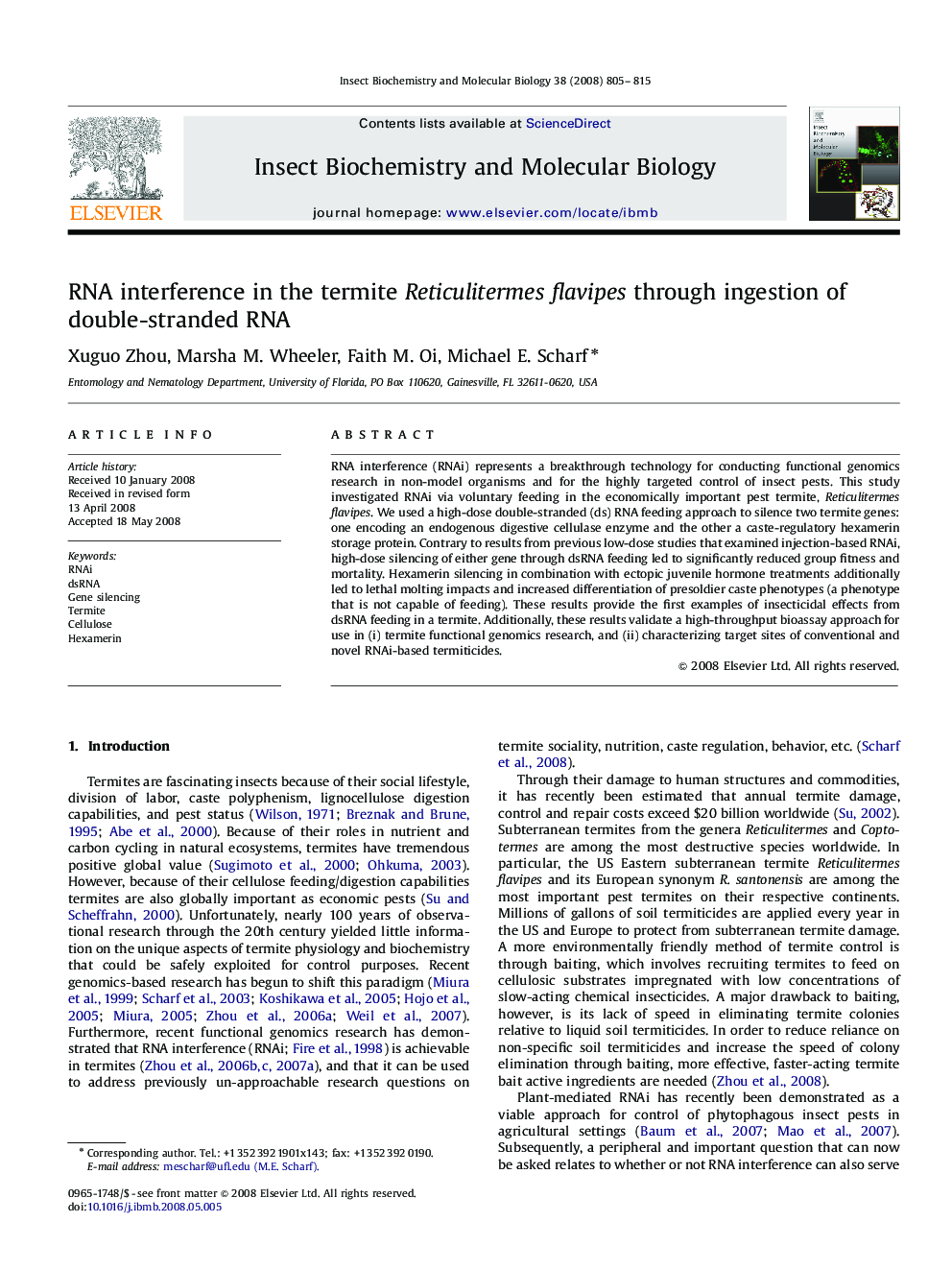| Article ID | Journal | Published Year | Pages | File Type |
|---|---|---|---|---|
| 1982816 | Insect Biochemistry and Molecular Biology | 2008 | 11 Pages |
RNA interference (RNAi) represents a breakthrough technology for conducting functional genomics research in non-model organisms and for the highly targeted control of insect pests. This study investigated RNAi via voluntary feeding in the economically important pest termite, Reticulitermes flavipes. We used a high-dose double-stranded (ds) RNA feeding approach to silence two termite genes: one encoding an endogenous digestive cellulase enzyme and the other a caste-regulatory hexamerin storage protein. Contrary to results from previous low-dose studies that examined injection-based RNAi, high-dose silencing of either gene through dsRNA feeding led to significantly reduced group fitness and mortality. Hexamerin silencing in combination with ectopic juvenile hormone treatments additionally led to lethal molting impacts and increased differentiation of presoldier caste phenotypes (a phenotype that is not capable of feeding). These results provide the first examples of insecticidal effects from dsRNA feeding in a termite. Additionally, these results validate a high-throughput bioassay approach for use in (i) termite functional genomics research, and (ii) characterizing target sites of conventional and novel RNAi-based termiticides.
